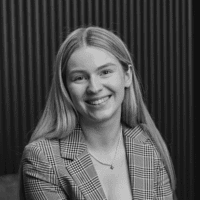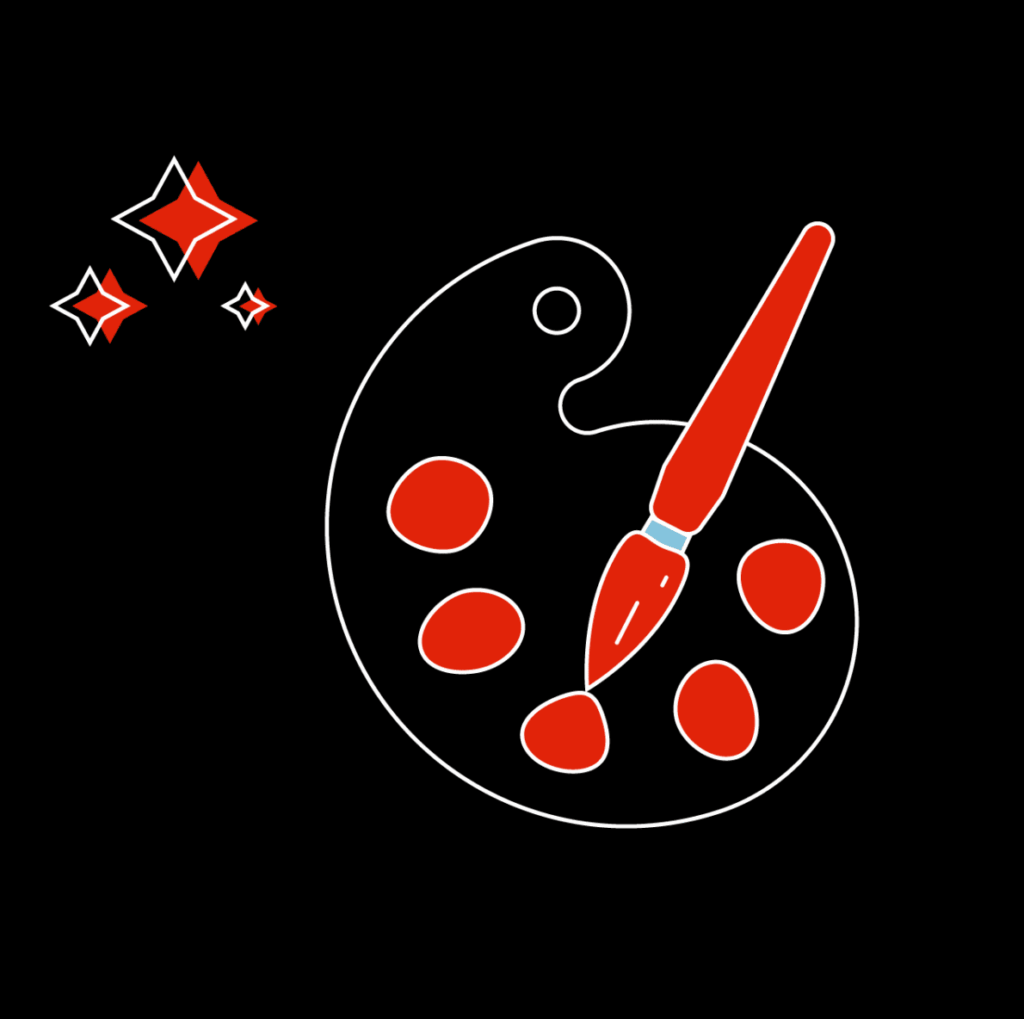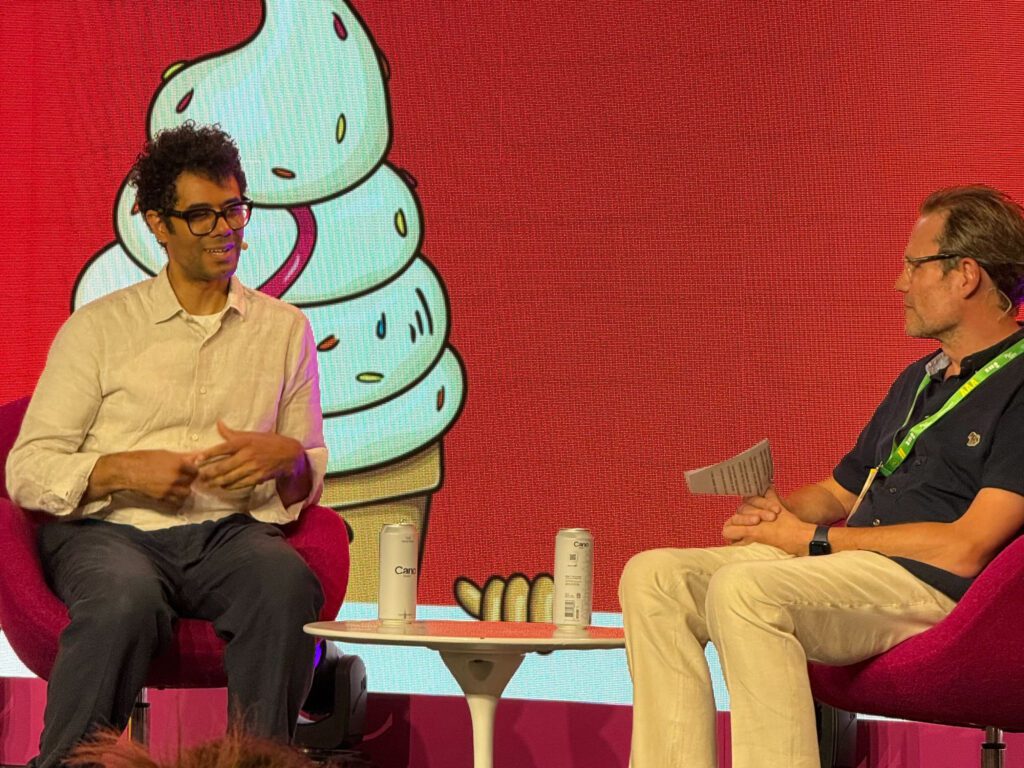
MAD//Fest 2025: Top insights and key takeaways

This week, myself and some of the team headed down to London for MAD//Fest 2025. The 3-day festival covered everything across tech, AI, strategy, innovation, brand, OOH campaigns, culture marketing, collaborations and creators.
Held at The Truman Brewery, this vibrant multi-venue experience held 15,000+ top brands and agencies, with records being broken on the opening day for the number of attendees.
The agenda is always jam-packed, and as always, MAD//Fest organised some amazing talk topics with unmissable brands.
This blog is going to break down my top sessions from the first 2 days of the festival, with snippets of insights, topics and themes, with the stats to back it all up.
Let’s get into it…
Collab-o-rama: Duolingo’s unexpected partnerships for global success
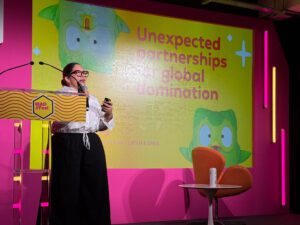
Rebeca Ricoy, Director of Marketing LATAM and EMEA
This first talk from Duolingo delved into the power of brand collaborations and how they make this work in such a niche market like language learning.
Duolingo’s mission is to ‘make education accessible for the world’, and they have held to this value all throughout their exponential growth. A lot of this growth has come through the use of their mascot, Duo the Owl, which, to no surprise, makes brand collaborations incredibly fun.
Duolingo has proven that collaborations are a shortcut to increased relevance and reach. But it only works when the collaboration is meaningful and held to the brand values of all involved.
Duolingo’s collab philosophy- the three C’s
- Cultural relevance- tap into trends that matter
- Community access-Ride the fandom wave
- Creative chaos- the weirder the better (within reason)
Case study 1: Duolingo x HBO MAX
Duolingo partnered with HBO MAX on the release of Series 5 of House of Dragons. This extremely popular TV Series powered up with Duolingo to help people learn High Valyrian, the fictional language used in the show.
There was also a leaderboard in the app, with the top learners being in with a chance of winning a real iron sword
The campaign had over 300,000 people downloading the Duolingo app and learning High Valarian! 40% of these went on to continue using the app and learning a different language.
Case study 2: Duolingo x McDonald’s Brazil
McDonald’s reached out to Duolingo after realising their new product launch was at risk of not being a success, due to the common mispronunciation of McFish in the Brazilian language.
Duolingo, on board with the project, had no intention of directing people back to their app, but just went for brand visibility through humour and a huge brand collaboration. With less than 1% of Brazilians fluent in English, this campaign was the perfect balance of humour, sneaky education and cultural relevance.
Watch the video below to see the campaign in action.
Be less boring with the BD100 and Innocent drinks: Cutting through the noise and building relationships that matter

Rich McHardy, Founder and Co-founder, McHardy Collective and The BD100
Irem Alp Mainwaring, Group Brand and Portfolio Director, Innocent Drinks
Myreete Stanforth, Head of Growth and Marketing, Global Markets, Ketchum and BD100 Rising Star 2023
Becky Hipkiss, New Business Director and BD100 Rising Star 2025, We Are Futures
This panel gave great insight into how to best grab the attention and create meaningful connections in a world where overstimulation (especially with emails) is a real problem. With inboxes overflowing, messages getting lost in the noise, and brand directors ghosting more and more often, it’s clear that building strong industry relationships is harder than ever.
Some shared thoughts on how to stand out, included investing time in relationships that you know matter the most. Mass email requests with little to no personalisation will most likely get ghosted with the hundreds others just like them.
Three top tips:
- Understand their pain points by listening way more than you talk
- People ghost when they feel chased, not chosen.
- Always leave the door open to people who do ghost, life gets busy
Irem from Innocent, added some stories of some poor outreach that she has received, including a collab opportunity from a boxing event, adding that thinking about the brand audience is one of the most important things to get right first.
10 years of funny with Haribo
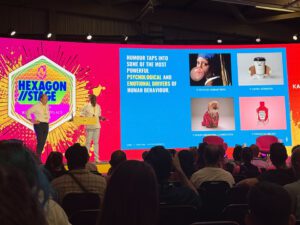
Trevor Robinson, ECD & Founder, Quiet Storm
Herwig Vennekens, Chief Commercial Officer, HARIBO Group
There has been a 40% decline in the use of humour as emotional advertising in the UK over the past 20 years. Haribo are an exception, with humour being at the heart of their campaigns, especially their ‘Kids voices’ campaign.
Humour can be used in advertising to deliver difficult messages, make sad topics feel lighter, or simply bring joy to the screens of homes across the country.
The success of the UK Haribo ad campaign, set in a boardroom where the adults are voiced by kids, had huge success, leading to the campaign being replicated in countries around the world. This ad has been voted the favourite TV ad in Germany for the past 4 years. Herwig Vennekens added the importance of getting the scripts translated by a native speaker in each country, as humour is so specific to the small details.
The Q&A approached some questions, asking about how a typically ‘serious’ and ‘unfunny’ brand could start to approach humour in their marketing, or if they should at all? The response was that all brands can use humour, it’s just about finding what kind of funny works best for you. Focus on finding out if it’s observational humour, sarcasm, dry humour, situational- but make sure that core brand values and consistency arent forgotten about.
For Haribo, their campaigns have proven that humour captures attention, builds emotional connection, and drives long-term customer loyalty.
Travel Man meets marketing land: Richard Ayoade
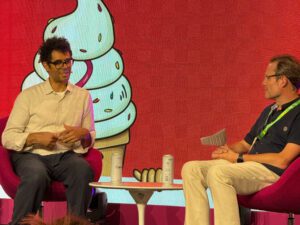
Richard Ayoade, Comedian, Actor, Presenter, Writer and Director
The highly anticipated talk of the day, Richard Ayoade, was a great voice to hear from, having been on both sides of the camera for campaigns.
Richard spoke about using different types of media to describe how advertising encompasses endless opportunities for storytelling. He said that advertising by one brand all needs to create a coherent story when used in conjunction with each other. In his advertising and campaign directing, he has seen the most success when encompassing all different types of media to engage the audience.
He also had some interesting thoughts on audience emotion- ‘adverts do the best when the audience thinks that the creators didn’t consider their feelings in the creation process’. Adding onto this, he shared that adverts tend to perform better when the brand does what they want to do in line with their values, and thinks less about what the audience needs are.
Very untypical angles to have in the industry, but he added that with the increasing exposure that social media gives, your target audience is everywhere, and more likely to stumble across your advert than ever before.
Found a place where we belong: the future of football fandom with Arsenal FC
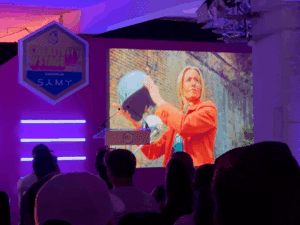
Arsenal FC know that they wouldn’t exist without their local fans, which is why the growth of their community to be stronger and more inclusive has been a key strategy in the past 12 months. Football clubs like Arsenal already have a deep emotional connection with their audiences, but sometimes the disconnect between them and players can seem like worlds apart.
Arsenal is increasingly fuelling the connection between team, community and culture to deepen that sense of belonging that is becoming more important as times get harder.
Their audience can be broken down into Islington, the wider London area, and then the UK and global audiences.
The release of their match day kit went viral, with the inclusion of the local community and shops as a key feature in their launch.
They are also trialling different forms of media like podcasts and short videos with players like Bukayo Saka, to again bring the football culture to screens, not just on match day. It was interesting to hear how football clubs in the UK (including the talk from Wrexham below) are diversifying their media output and getting local communities involved at the heart of their branding.
IKEA – How to unlock new markets by being unexpected
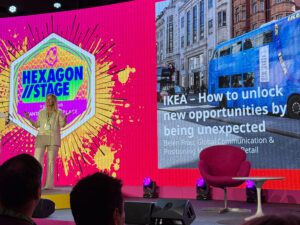
Over the past few years, IKEA have been opening up city centre stores, bringing their brand closer to where their audience lives and works, one not far from the MAD//Fest venue, in the middle of one of London’s busiest shopping destinations, Oxford Street.
While the footfall into physical stores has brought incredible success to IKEA, showing up in unexpected places isn’t unusual for IKEA. They have been getting closer to their customers culturally too!
For example, IKEA showed up at:
- Paris Fashion Week, as IKEA+, caused a 25% uplift in brand recognition in France
- Milan Design Week featuring installations, product reveals, and a schedule of events exploring life at home
- Hosting Oxford Street housewarming parties
One of IKEA’s core values is to make furniture affordable and accessible to the world. Audience research and understanding are at the heart of this. Every year, IKEA also go into the homes of 38,000 people across 30 different countries. They found that 48% of people don’t feel that real living in the home setting is accurately represented in advertising and media.
IKEA showing up in unexpected places has allowed them to unlock new markets while staying true to the core values and mission of the brand. It was great to see IKEA getting involved in so much OOH advertising in a world which can be so heavily focused on digital.
PG Tips – Bringing back the creativiTEA
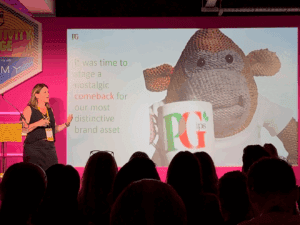
Elle Barker UK&I Chief Marketing Officer, Lipton Teas and Infusions
PG Tips started the talk explaining how over the past few years their brand has fallen victim to inconsistency in their branding, dull campaigns and lack of emotion in their storytelling. They have chopped and changed their strategy so much that audiences were getting bored and engagement was falling off a cliff edge. Relying on the fact that Brits drink over 100 million cups of tea every day collectively, their product was the only thing holding them up.
There are plenty of studies out there showing the direct impact that nostalgia has on mental health, reducing levels of cortisol and other stress hormones.
This is why they brought back their famous mascot, ‘Monkey’.
Monkey started featuring again in TV ads, billboards, packaging and social media. Even giving him a whole updated personality with his own children and a career. The brand started to live through the mascot, with audiences becoming connected to his story, and therefore the brand.
The initial campaign created 79 pieces of coverage and 7 ‘monkey interviews’.
Overall, the talk emphasised the importance of consistency, creating conversation and opinions, and most importantly, making it impossible to be ignored.
Creators under pressure: Money, mental health, and the gender pay gap in the UK
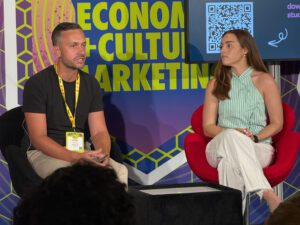
Robin Ward, VP of Sales, Kolsquare
Grace Andrews, Brand Director, Flight Story
UK creators are posting across more platforms than anywhere else, Instagram is losing ground, and the rising stress, burnout, and gender pay gap only question the sustainability of the industry.
Grace spoke about the payment system in the industry, which is kept very secretive among creators. She advocated for increased transparency among creators to hold brands accountable for the consistency in the fees they are offering.
Another concern in the industry at the moment is the reliance on third-party social apps, holding huge amounts of influencer and creator data, that which people’s livelihoods depend. Followers, engagement rates, views, and reach all have an impact on the opportunities and fees that a creator is offered. Grace said that she is in support of the shift to a more entrepreneur-creator role where people are in control of their own data.
Trolls in the industry are also a huge problem in the UK compared to other European creators, with private investigators being hired in some cases to uncover and stop online hate from being so freely accepted without consequence. Grace spoke about how she thinks platforms should be taking more responsibility for this, and supports the idea of ID/Passport checks to open a social media account.
In the creator and influencer industry, which from the outside, has a misconception of being easy, fun and always good money, it was interesting to dive into the realities of creator struggles, and hear some approaches on how this could become more sustainable for the future.
The Wrexham story
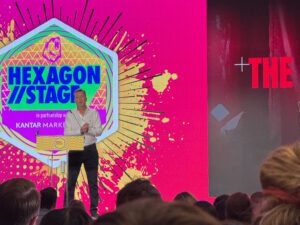
Three years after two Hollywood actors, Ryan Reynolds and Rob McElhenney, bought Wrexham AFC, the club finds itself back in the EFL Championship after 3 consecutive promotions.
The success of their documentary ‘Welcome to Wrexham’ is now approaching its 5th series and has had huge success in the US with over 4 million viewers on average for each series, and eight Emmy awards. This has caused Wrexham to have a 7.2x higher brand awareness in the US compared to the average Premier League football team.
The club have also grown their social following, starting with 400,000 followers, but now at over 4.5 million.
Case study: Wrexham x SToK
Wrexham partnered with Stok Cold Brew, a popular American brand for its US audience, for TV ad (watch the video here)which was also shown at the Super Bowl Halftime show. From in-stadium advertising to co-branded products and custom campaign content, this partnership offered a 360-degree strategy for record-breaking brand awareness and social engagement.
As always, it’s great as an agency to attend these events and feed back to the team about key topics, common themes and takeaway insights.
Head to our socials to see our videos and pictures from the event!
